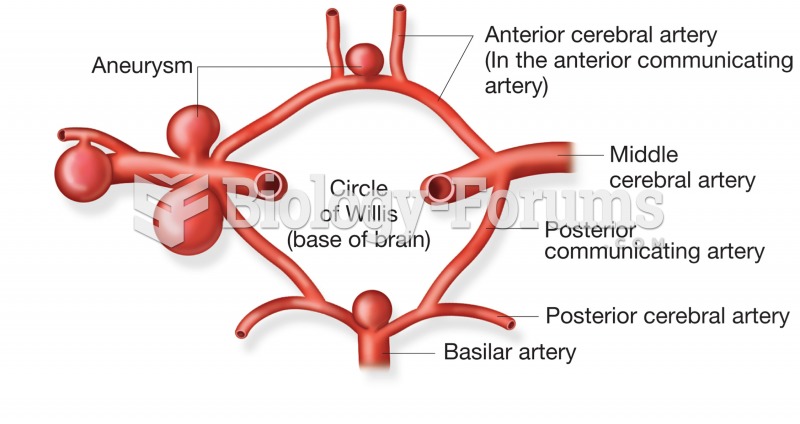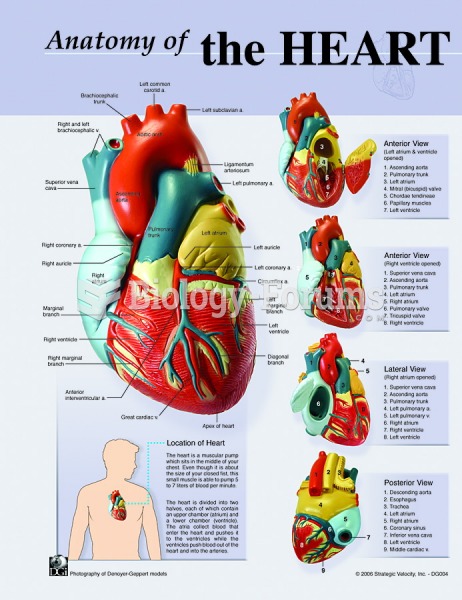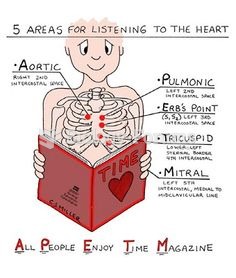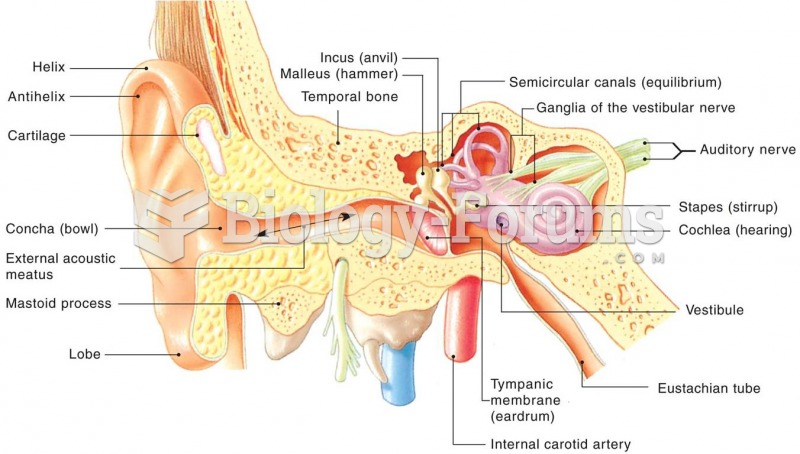|
|
|
Thyroid conditions may make getting pregnant impossible.
There are over 65,000 known species of protozoa. About 10,000 species are parasitic.
After 5 years of being diagnosed with rheumatoid arthritis, one every three patients will no longer be able to work.
Adolescents often feel clumsy during puberty because during this time of development, their hands and feet grow faster than their arms and legs do. The body is therefore out of proportion. One out of five adolescents actually experiences growing pains during this period.
Astigmatism is the most common vision problem. It may accompany nearsightedness or farsightedness. It is usually caused by an irregularly shaped cornea, but sometimes it is the result of an irregularly shaped lens. Either type can be corrected by eyeglasses, contact lenses, or refractive surgery.







